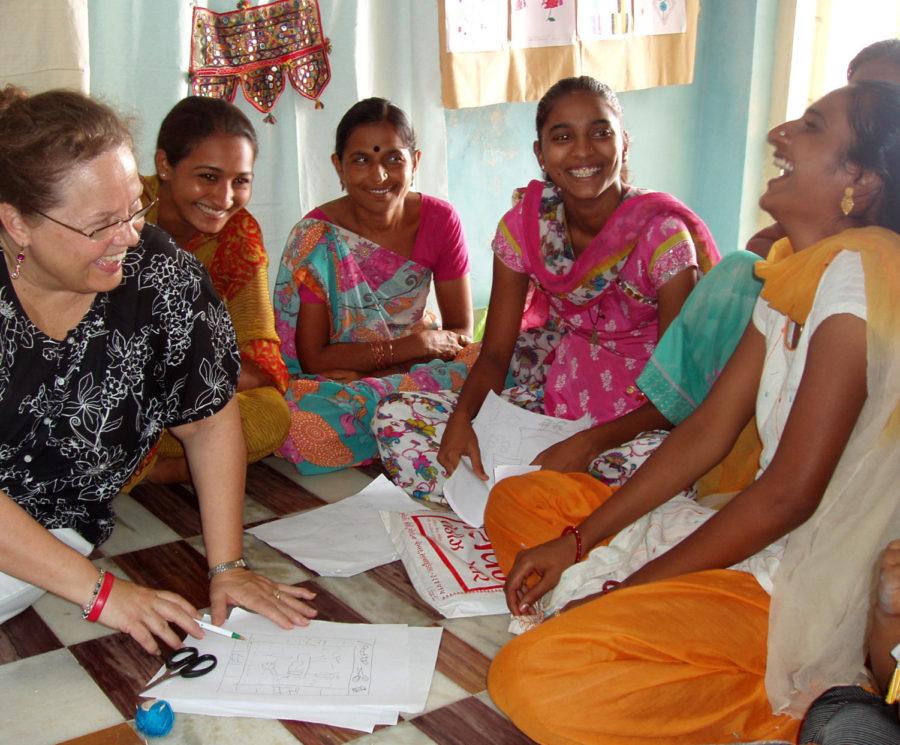Tana Bana exhibit features clothing from India
Cindy Gould, ISU Associate Professor, shares a laugh with Kailashben and other students participating in an embroidery training program in Savarkundla, Gujarat, India.
October 25, 2011
Iowa State’s Textiles and Clothing Museum in Morrill
Hall is featuring a new exhibit this fall called “Tana Bana” to
display a wide array of textiles from India.
Sonali Diddi, Suzanne LeSar and Sunsett Reynolds are
the co-curators for the exhibit. They worked with Collections
Manager Janet Fitzpatrick to choose all of the garments displayed,
research the history of India with the help of associate professor
Cindy Gould and put together all of the displays.
“The exhibit is not just about textiles and clothing
but an experience of a different culture all together,” Diddi
said.
The name, tana bana, means “warp and weft” in the
Hindi language. As fabrics are weaved together, the yarn running
lengthwise through the fabric is called warp, and the yarn running
crosswise is called weft.
The exhibit displays a variety of styles and
techniques from the culture of India.
“We wanted to have traditional artifacts from
different regions of India and also show how contemporary fashion
is inspired by traditional forms,” LeSar said.
Such intricate clothing of this sort is actually not
made in a factory. The people of India take the time to design,
dye, embroider and adorn each garment within their community.
Tiny hand tie-dying called bandhani, intricate
embroidery from Northern India and traditional women’s bridal
attire are all shown as part of the exhibit.
When most Americans picture a woman from India, they
usually picture her wearing a sari. What most people do not know is
that saris can be worn in a variety of ways. The co-curators draped
saris on the mannequins to portray the various ways that a sari is
worn.
The exhibit will be shown on weekdays through Dec. 9
at Morrill Hall. In each section of the exhibit, the co-curators
worked to display a variety of colors, technique, style and region
of India to give viewers a broader understanding of the culture.
Everyone is welcome to explore the museum.
“Anything we can do to expand our awareness of other
cultures enriches our own appreciation and helps us examine our own
environment,” Gould said.

















